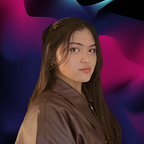Things I Wish I Knew Before Starting Digital Art
Like many, I started sketching with graphite and painting with acrylics first. Traditional art is so expensive to maintain so I decided to invest in digital art. I also have goals of becoming a concept artist for the film industry so being able to draw digitally is essential. Digital art can be daunting at first. There’s a lot of information to take in, but I’m here to help! Here are things I wish I knew when I first started digital art.
Explore Devices That Work For Your Art Style
There are three drawing tablets you can choose from:
- Pen Tablets
This is the most common tablet for digital artists and the cheapest option out of the three. When connected to a PC, a pen tablet operates as a mouse. Additionally, it has pressure sensitivity, so the lines have flowing thickness and opacity as you draw! The price ranges from $30 to $400. I recommend getting Wacom Intuos as a starter tablet.
2. Pen Displays
This is a bigger version of the pen tablet but with screens! Pen displays are great for when you want to look at your drawings as you draw them. This is something you can’t do with the pen tablet. They’re also used in the professional art industry. The price range is $150 to $3500. If you’re worried about your finances, don’t worry about getting this one for now. Once you’re comfortable with digital art, you can always upgrade in the future!
3. All-in-One Tablets
This is the most convenient of all because you don’t need to connect them to a PC. An example of this is Apple’s iPad Pro and Microsoft’s Surface Pro. The price ranges from $800 to $3000. An all-in-one tablet is a great go-to if you want to have a laptop and a drawing tablet at the same time.
My first drawing tablet was Microsoft’s Surface Pro. I regret not trying out different tablets. I kept up with it for a year and a half before buying a Wacom Intuos. It was life-changing! My paintings came out nicer because Wacom’s pressure sensitivity is better with digital painting compared with Surface Pros which are better for line arts. So, explore as much as you can and choose a device that works best for your art style!
Here’s my sample of digital painting using a Surface Pro versus digital painting using a Wacom Intuos:
Choose a Software That Fits Your Art Goals
There’s a bunch of drawing software out there, and it may be hard to choose. A good question to ask yourself is “Do I want to turn this into a career or a hobby?” If you’re unsure, that’s okay! You can opt to explore free programs first like Medibang.
If you want to make a hobby out of this medium, I recommend trying Clip Studio Paint for Pen Tablets and Displays. This costs $49.99, but when you buy a Wacom product, it comes with it as a special offer!
If you have even the slightest vision of turning digital art into a career in the art industry, I really recommend investing in Adobe Photoshop. This is industry-standard software that’ll give you an advantage when you start applying for jobs.
I had career visions with digital art, but I started with Medibang for six months. Though there’s not a big difference, I regret not investing in Adobe Photoshop right away. When I was applying for jobs, they were all asking whether I have more than a year of experience with Photoshop. Something I could’ve had if I started earlier on.
Digital Art is Not Like Traditional Art
Erase all the traditional art techniques you’re used to! When exploring this medium, be sure you’re familiar with the basics first. Know the importance of creating layers, be familiar with your shortcut keys, and have a deeper understanding of the available brushes and colors.
- Layers
This is the biggest advantage of digital art. Layers are like stacked sheets of paper. You can put your sketch, line art, color, shading, and highlights on separate layers. This makes it easier for you to edit when you mess up. Naming your layers is also a good habit in order to avoid confusion!
2. Shortcut Keys
Here are some of the important shortcut keys that apply to most software:
B — Brush Tool
E — Eraser Tool
Ctrl Z — Undo
Ctrl-Shift Z — Redo
Alt — Eyedropper Tool
Ctrl + — Zoom In
Ctrl — — Zoom Out
] — Increase Brush Size
[ — Decrease Brush Size
3. Brushes
Your digital art software provides a wide range of brushes and can be overwhelming! Don’t be afraid of them and start simple. Try the hard round brush first. Adjust the size and opacity. Be comfortable drawing with it and have fun!
4. Colors
As with brushes, digital art software offers a lot of colors to choose from. Though it may be daunting, it’s easy to navigate your way through it. Keep in mind that you shouldn’t focus on the color wheel but focus on the HSB sliders instead. HSB stands for Hue, Saturation, and Brightness.
Hue — adjust from 0 to 360 to reach your desired distinct color.
Saturation — adjust the slider from 0 to 100 for the richness of the hue.
Brightness — adjust the slider from 0 being the darkest to 100 being the lightest.
Enjoy your process of learning this new medium. Feel free to turn these into a checklist before you start. How I wish I knew I needed to explore different tablets, choose a software that fits my art goals, and mastered the basics first before exploring this medium. I hope the tips I mentioned help you become equipped in your digital art journey. You got this!
